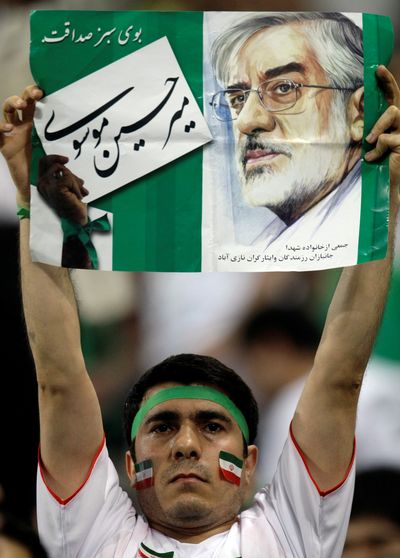Huge rallies planned in Iran
Government expels foreign reporters

TEHRAN, Iran – Hundreds of thousands of demonstrators flooded Tehran Wednesday in the fifth day of protests to demand the annulment of Iranian President Mahmoud Ahmadinejad’s re-election, and more nationwide protests appeared to be in store.
Defying a government ban on the demonstrations, Ahmadinejad’s main election rival, Mir Hossein Mousavi, called for massive rallies around the country today to mourn the dead in previous days’ protests, which a leading Iranian human rights group said numbered 32.
The government continued its crackdown on the opposition, reportedly arresting leading journalists and politicians. It expelled foreign reporters on temporary visas, ordered Tehran-based reporters to stay in their offices and threatened legal action against Iranians who’ve been filling the information void by e-mailing videos, news reports and pictures abroad.
The regime accused the U.S. of meddling in the crisis by making “interventionist” statements, which the Obama administration promptly denied.
More turmoil appeared likely. Mousavi, who claims he was cheated out of victory by massive vote rigging, urged his supporters to wear black to mourn the results and the dead. In a statement on his Web site, he singled out the eight who were shot dead Monday by members of the Basij, a hard-line volunteer militia that’s loyal to Ahmadinejad.
His call for a new protest was in defiance of Supreme Leader Ayatollah Ali Khamenei, who earlier in the week told Mousavi to pursue his election fraud complaint “legally and peacefully” through an investigation by the unelected 12-member Guardian Council.
The election outcome and the subsequent protests have exposed the fiercest power struggle in Iran’s highly complex political system since the clergy gained power in the 1979 Islamic Revolution that ousted the late Shah Reza Pahlavi.
“This is the first time (since 1979) that one part of the political establishment is arrayed against another part of the political establishment,” said Muhammad Sahimi, a professor of chemical engineering at the University of Southern California and a commentator on Iranian politics.
Deeply conservative clerics who maintain close ties to top bureaucrats and intelligence and security officials who began as foot soldiers of the revolution are seen as lining up behind Ahmadinejad, but their more moderate rivals led by older leaders of the revolution, such as former president Akbar Hashemi Rafsanjani, are backing Mousavi.
The longer the power struggle goes on, the greater the chaos in the streets could grow, confounding any predictions as to the eventual outcome, said Trita Parsi, the head of the National Iranian American Council, an advocacy group in Washington.
“A couple of days ago, all this was inconceivable,” Parsi said.